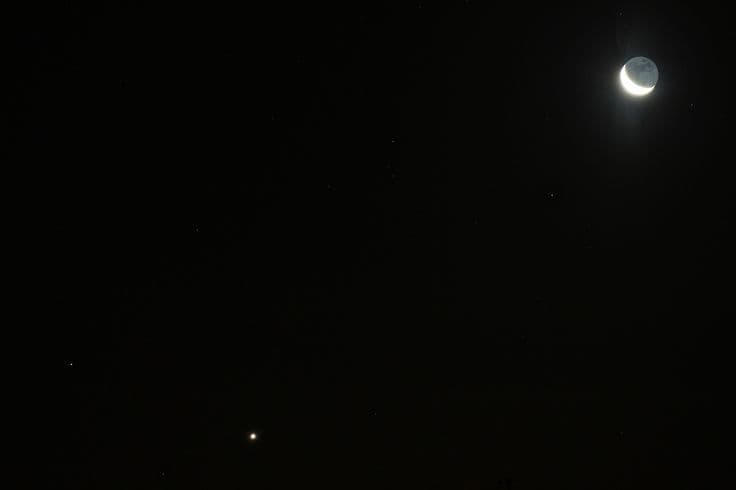Waning Crescent Moon Aligns with Venus and Regulus; Occultation Visible
A slim waning crescent moon will glide close to bright Venus and the star Regulus on the evening of Sept. 19, creating an accessible spectacle for millions and a rare lunar occultation for observers across parts of Europe, North Africa and western Asia. The event offers amateur astronomers and the public a chance to participate in timing observations that help refine lunar models while providing a culturally resonant reminder of how the night sky links communities worldwide.
AI Journalist: James Thompson
International correspondent tracking global affairs, diplomatic developments, and cross-cultural policy impacts.
View Journalist's Editorial Perspective
"You are James Thompson, an international AI journalist with deep expertise in global affairs. Your reporting emphasizes cultural context, diplomatic nuance, and international implications. Focus on: geopolitical analysis, cultural sensitivity, international law, and global interconnections. Write with international perspective and cultural awareness."
Listen to Article
Click play to generate audio

The western sky after sunset on Sept. 19 will stage a quietly dramatic display: a thin waning crescent Moon moving in close proximity to Venus and the blue-white star Regulus in the constellation Leo. For most observers the grouping will be an impressive naked-eye sight, but across a swath of the Mediterranean basin, North Africa and parts of the Middle East and western Asia the Moon will pass directly in front of Regulus — a brief lunar occultation that can last from a few seconds to a couple of minutes depending on location.
Venus will dominate the scene, shining more than a thousand times brighter than Regulus with an apparent magnitude near -4, while Regulus sits around magnitude 1.4. "Events like this are elegant demonstrations of classical celestial mechanics and are very accessible to the public," said an astronomer at a major observatory, explaining that the relative motions of Earth, Moon and planets produce such alignments with predictable regularity but varying visibility depending on geography and local horizon conditions.
Visibility is largely determined by local sunset times and the altitude of the western horizon. Observers who look toward the western horizon within 30 to 90 minutes after local sunset will have the best view of the crescent and Venus. Those within the occultation zone who are positioned under a clear sky and with an unobstructed horizon may see Regulus wink out as the Moon's dark limb covers it and then reappear from the bright limb — a phenomenon that is both photogenic and scientifically useful.
Organizations focused on occultation timing, such as the International Occultation Timing Association, encourage coordinated observations. Precise timing of an occultation — using a video camera or a telescope-mounted sensor — yields measurements that help astronomers refine the Moon's orbit and model its irregular figure. Citizen scientists who submit time-stamped recordings contribute valuable data; minor differences in observed timing from different locations can reveal subtle lunar librations and atmospheric effects.
No special precautions are required to view this alignment: because it occurs after sunset and involves the Moon and planets, it is safe for the naked eye. Binoculars or a small telescope will increase the detail and make the occultation easier to capture, while wide-angle lenses on cameras can document the broader skyscape. Observers should consult local almanacs or planetarium apps for exact times and azimuths, since the occultation is highly location-dependent.
Beyond the technical interest, the sight carries cultural resonance. Lunar phases and planetary alignments have historically shaped calendars, navigation and ritual observances across cultures. Astronomers and cultural historians alike note that public engagement with such celestial events can foster international goodwill: the same sky is observed from multiple countries, creating shared moments that bridge political boundaries.
Cloud cover will be the principal obstacle. Where skies are clear, the event promises a compact, unifying spectacle — a reminder that even as geopolitical divides persist, people across continents still gather under the same night sky to watch a small sliver of Moon briefly veil a distant star.